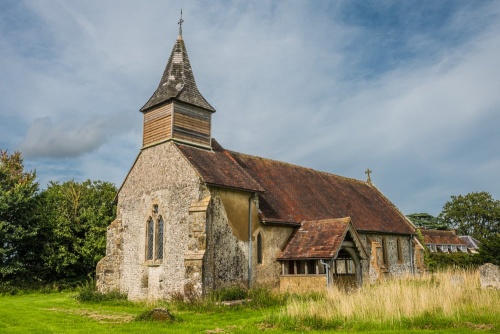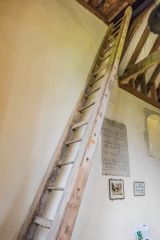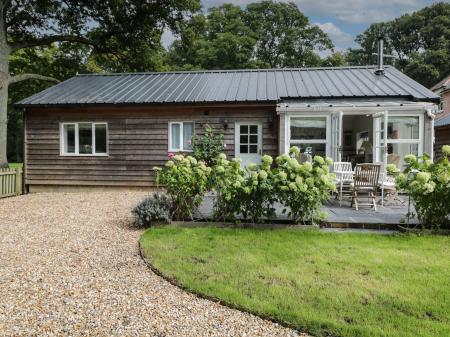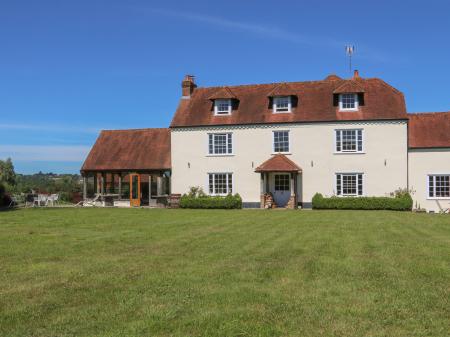
A church in Colemore was recorded in the Domesday Book of 1086, when the parish was joined with nearby Priors Dean. The original 12th-century church was built on a cruciform plan, but in 1670 the south transept was pulled down.
Historical Features
The interior features a square 12th-century font made of Purbeck marble. Curiously, each face of the font is carved with a different design. The official guide to the church suggests that the stonemason may have been practising his craft before applying for work at Winchester Cathedral, which was then under construction.

Hanging above the west end of the church are two bells, reached by a 17th-century ladder. The smaller bell was cast in 1380 and the larger one in 1627. In the south-west corner is a memorial to James Cookson, who sered as the rector of Colemore for 59 years.
Look for graffiti with the initials RW and the date 1694 carved on the ladder exterior. The initials are thought to be those of a villager named Richard Weene, who died in 1704.
The oldest part of the church is the north transept, where you will find a narrow 11th-century window high on the east wall. A larger window on the north wall dates to the 12th century. The table now serving as an altar was likely constructed out of old floor boards. A squint in the east wall of the transept gives a view of the chancel and high altar.

In the north-east corner of the chancel is an arched opening thought to have been used as an Easter Sepulchre. It has very clearly been rebuilt during the Victorian restoration in 1870.
Separating the chsancel and nave is a worn wooden screen, thought to date to the 16th century. On the wall is a tablet commemorating several members of the Cookson family, including Captain John Cookson, who died in 1819 at the agew of 31.
The richly-coloured east window was made by the CE Kempe company in 1876.

The manor of Colemore was once owned by Southwick Priory, and later by Henry VIII, who granted it first to Anne of Cleves and then to Catherine Howard.
One former rector was John Greaves, whose son Edward rose to become the royal physician to Charles I.
The church is no longer used for regular worship and is in the care of the Churches Conservation Trust. The church was open when we visited. There is no dedicated parking, but it was easy to park along the grassy verge.










 We've 'tagged' this attraction information to help you find related historic attractions and learn more about major time periods mentioned.
We've 'tagged' this attraction information to help you find related historic attractions and learn more about major time periods mentioned.



